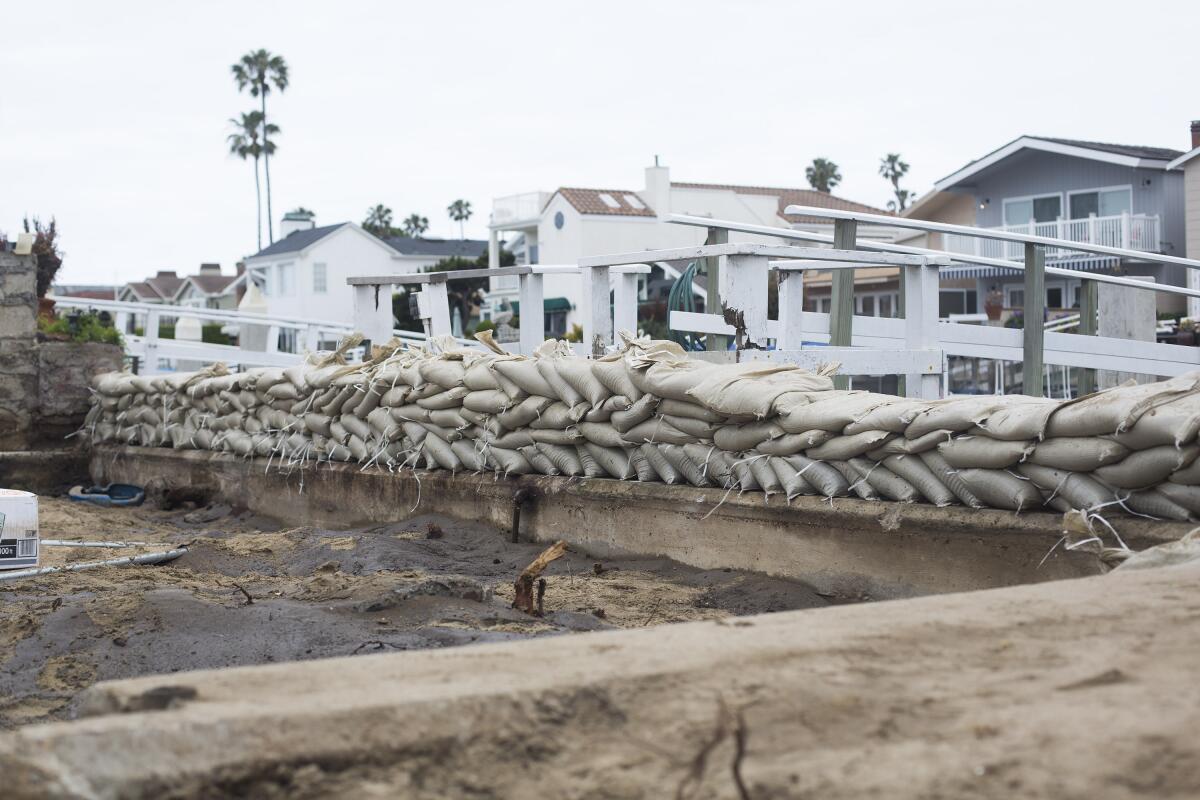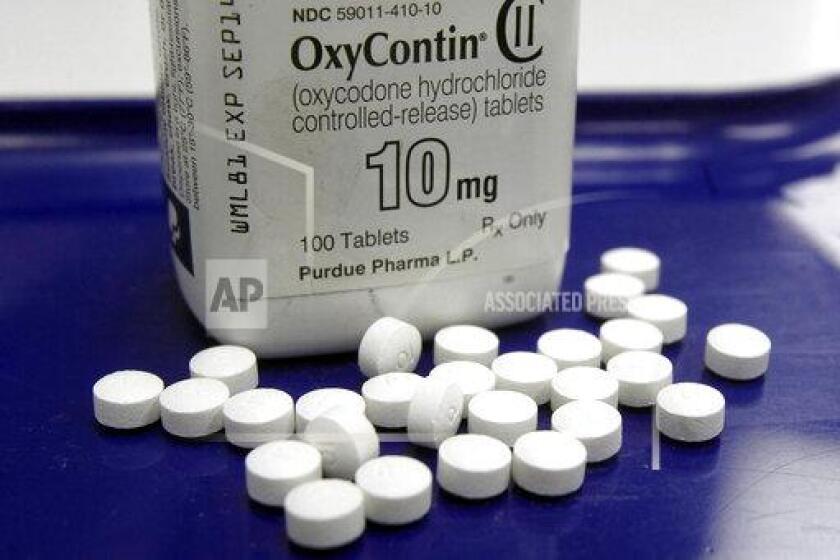Apodaca: It may be easy to ignore for now, but climate change will have an impact on Orange County

- Share via
Orange County is a beautiful place to live — so splendid that it’s tempting to ignore climate change or deny that it’s really happening.
But will apathy and denial finally crumble if parts of Balboa Island and peninsula, and Huntington Harbor, are routinely under water, as rising tides relentlessly inundate the coastline, overwhelming higher seawalls and sandbags and threatening the existence of multimillion-dollar mansions?
Will we acknowledge the scope of the problem when the beaches and tide pools in Laguna Beach, and the marvelous creatures that depend upon that marine environment, disappear?
Will reality sink in as ash and smoke from ever-larger and more intense wildfires rain down on us for months out of the year, every year, searing our lungs and making the very act of breathing outdoors hazardous?
How about when we learn that the toxins released by those conflagrations are poisoning our water supply?
What if water rationing and scheduled power outages become not just occasional emergency measures but the standard order of business?
Will we wake up then? Is that when we’ll finally acknowledge that climate change is real, it’s rapidly changing the world we live in, and we must immediately take bold measures if we are to have any chance at saving ourselves from a bleak future?
Certainly the recent United Nations climate change report should have been enough to rally even the most reluctant among us.
The report painted a harrowing picture of a human-caused climate disaster that has already resulted in the planet warming by an average 1.1 degrees Celsius — or 2 degrees Fahrenheit — primarily due to our use of fossil fuels. Record heat waves, devastating floods and out-of-control wildfires can all be tied to this phenomenon.
Overdoses of drugs intended for ‘pain management’ have led to close to 500 deaths a year in Orange County.
The report warned that because we have failed to act decisively to reduce our carbon output, an even hotter future is locked in, basically a done deal, even if we sharply reduce emissions starting today. This will lead to worse, well, just about everything that’s bad — famines, droughts, floods and hurricanes, as well as massive die-offs of animals, plants and sea life.
If we do nothing, the report concluded, large swaths of the Earth will become almost unimaginably harsh as vast ecosystems reach the point of complete collapse.
Let’s be clear about one other point. This unrecognizable future Earth will survive, just as it did after the dinosaurs became extinct. It will be different, but it will endure.
It’s humankind that might not pull through. It’s us.
Our species is in grave danger, along with all manner of other life on the planet — from tiny bumblebees to massive whales to the nurturing kelp forests in the ocean waters off of coastal Orange County — which are able to exist and thrive only in a rather narrow sweet spot of environmental conditions. We are actively changing those conditions — more rapidly than even the most dire projections of not that long ago.
If any readers are tempted to think that I’m being alarmist, when it comes to this issue I firmly believe that we all need to be alarmists.
As Ray Hiemstra, associate director of programs for Orange County Coastkeeper, an organization trying to protect the region’s water resources, said, “I don’t think people are scared enough yet.”
Some might argue that the costs of combatting climate change are too steep. We can’t afford the high price tag for the kinds of policies and programs that would put an end to our reliance on fossil fuels and which are needed to promote more resilient and sustainable industries, products and practices, they’ll say.
But the evidence is now irrefutable: The cost of not making profound changes will be far higher.
People are already dying, suffering, losing property and seeing the quality of their lives diminish because of climate change, and if we do nothing the toll will grow, not incrementally but exponentially.
But if the catastrophic impact on humanity isn’t convincing enough, consider the financial case.
In just one of many similar forecasts, the insurance giant Swiss Re estimates that if no action is taken to mitigate climate change, the world economy could shrink by 18% by the year 2050 due to such impacts as crop yield failure, disease and rising seas.
The devastation will be experienced unequally throughout the world and among regions within the U.S.
In California, average temperatures could rise by 5.6 to 8.8 degrees Fahrenheit by century’s end, while our water supply from snowpack is projected to decrease by two-thirds, the average area statewide that burns through wildfire would increase by 77%, and 31% to 67% of Southern California beaches could completely erode, according to the state’s Fourth Climate Change Assessment.
Billions of dollars worth of development, perhaps trillions, are at risk along our state’s cherished coastline.
The prospects are grim, but all is not yet lost, not if we do everything possible to save ourselves and future generations. The choices we make individually and collectively — all of us, starting right now — will determine the outcome.
Because I refuse to give way to hopelessness, I will highlight in future columns the efforts of some smart, dedicated people who are putting their brain power to work on issues related to climate change.
All the latest on Orange County from Orange County.
Get our free TimesOC newsletter.
You may occasionally receive promotional content from the Daily Pilot.







